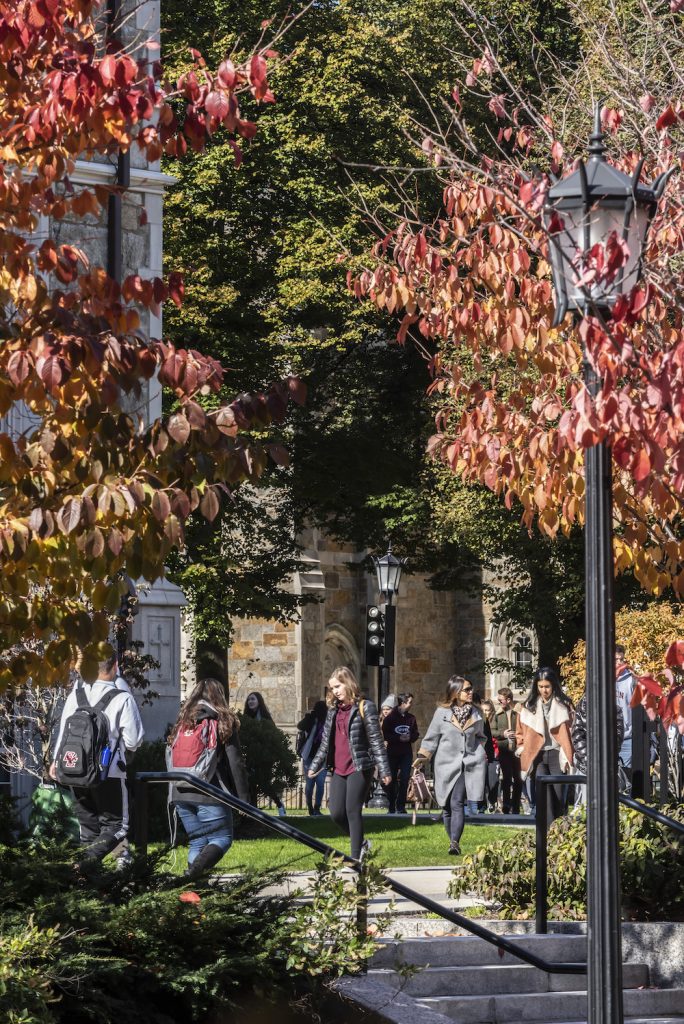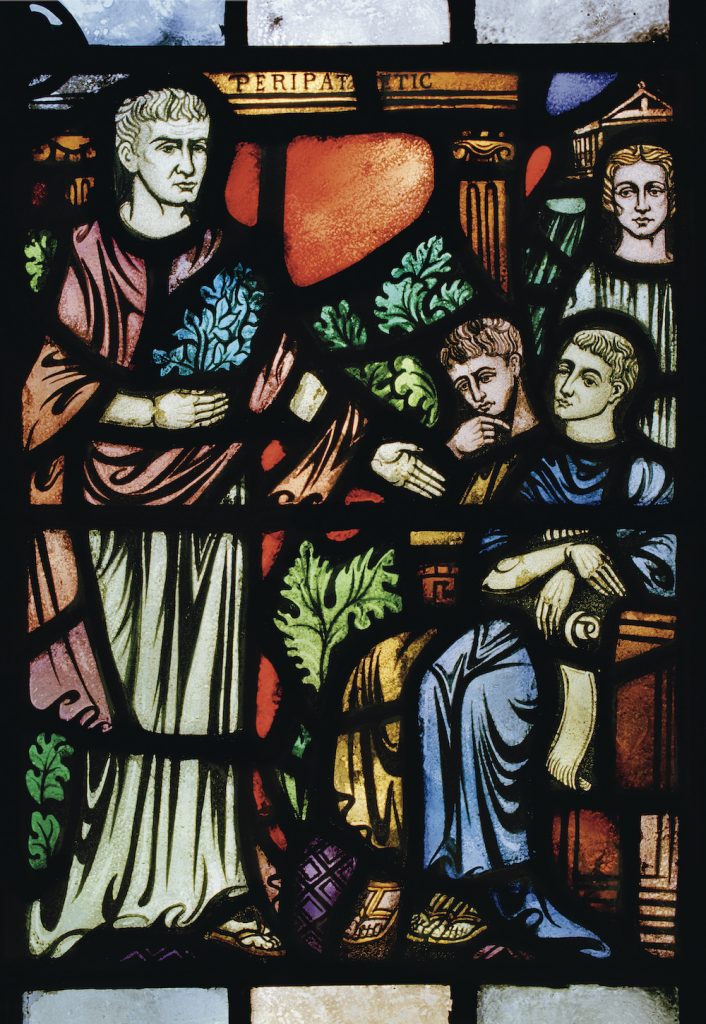Back to the Classroom

Students and teachers at BC had a range of different experiences from March 2020 to the summer of 2021, from fully online (synchronous and asynchronous) to hybrid to in-person with social distancing and masks. Because library spaces were limited, BC Libraries instruction went primarily online. After the initial sudden change, we managed the longer-term transition to online teaching and learning with an intentioned focus on what would work best pedagogically. This fall we transitioned back into the classroom. Rather than returning to “normal,” we prepared ourselves over the summer with a set of workshops again focusing on pedagogy: what could we adapt from our online experiences to the F2F environment? How could we use this moment to re-think teaching and learning? Here are some librarians’ reflections about teaching this fall.
The fall semester continues to be an invigorating one. We have received over seventy First Year Writing Seminar library session requests and we will teach most of them before the Thanksgiving break. It is interesting to note that many of this semester’s sessions include a good number of upper-class women and men fulfilling their writing requirement. We made the best use of Zoom for all our FWS sessions last year. While students were engaged during the sessions, the emotional togetherness was not always present, especially when many students in different time zones expressed how tiresome it was to be going to their calculus or biochemistry classes at 2am their local time. Having all of us in one time zone this semester has brought back much of the classroom energy and the emotional connection.
Kwasi Sarkodie-Mensah, Manager, Instruction Services
The return to (slightly more) normal library sessions for First-Year Writing Seminar courses this semester has been nothing short of fantastic. While Zoom has its perks (breakout rooms, anyone?), there’s something special about being able to chat with students organically at the start and end of an in-person class and to experience a class’s dynamic firsthand. Despite the benefits of most students returning fully to campus and being able to return to in-person library instruction, there does still seem to be a palpable level of stress among our first-year students (and if we’re being honest, everyone else, too). One topic of conversation that came up in a number of discussions with colleagues during the early days of the pandemic was the need for a little bit of grace and understanding in all of our interactions, including those with one another and with our students. The fall semester is always a time of transition, especially for our first-year students who are adjusting to college life, and that experience is definitely heightened after nearly two years of pandemic living and learning. As I meet with students in classes and one-on-one, my goal is to hold onto that early-pandemic flexibility and empathy, regardless of whether or not things are mostly back to normal. College as a whole can be stressful, and if I can provide some support while also helping students gain useful research skills that they can use this semester and beyond, I’ll consider it a win.
Jessica Hinson-Williams, Instruction Services Librarian

In the spring of 2020 the demand of re-thinking how to teach in a new medium forced some questions: Is a breakout room like a group of students around a table? (No, it’s more like a group of students teleported to a private room, which means privacy, but misses the buzz of engagement from other groups.) Is a Google sheet or a jamboard like a worksheet? (Sort of, and it adds the advantage of some accountability for staying on track, but reduces a sense of ownership over individual work.)
It was handy to be able to call on people by name in Zoom, and a creative colleague made a set of laminated cards for students to write their names on in our library classroom, which means I can do better than “you there, yes, you, in the blue sweater.” We also got into a Zoom habit of having several instructors help manage breakout rooms; based on those successes we’ve invited our reference assistants to come into our classes and help students as they try out search strategies. I’ve also used Google sheets as in-class worksheets, and tried out in-class online surveys. Some experiments have worked, some haven’t. And returning to F2F reminded me that if I’m teaching from my authentic self, students are pretty forgiving. Or at least they’re polite. I’m thankful for both. (Aren’t our students a wonder?)
Steve Runge, Learning Commons Manager

The transition back to normal library instruction has looked a little different at Burns Library. After two semesters of in-person-but-distanced teaching, online teaching, and the always challenging hybrid teaching, we were finally able to put away our tape measures, unlearn our six-foot-seating-arrangement-spread-across-multiple-classrooms skills, and put students in small groups for active learning with primary/historical sources. Despite almost all students being vaccinated in the Fall 2021 semester, we still strongly encouraged them to follow the CDC recommendation that everyone, regardless of vaccination status, wear a mask while indoors in a public setting.
The Burns Library Teaching Librarians were thrilled to have a few rambunctious classes again, with students figuring out amongst themselves what primary source literacy skills they needed to flex to figure out what the heck was in front of them. We were also happy to have all the students in one room again, so we could truly co-teach instead of teaching concurrently. The biggest downside was closing the Reading Room many times to accommodate classes. /p>
One of the biggest changes in Burns Instruction for the fall semester was more strongly integrating EDI principles into our teaching. We’ve shared simple class plans so students know what to expect, built in consistent hearing checks to account for masks, regularly included warnings about materials that might be traumatic, and designed exercises around archival silences; we plan to expand these efforts further as we move into Spring 2022.
Katherine Fox & Kathleen Monahan, Burns Library Instruction Program
It is so much easier to tell if you’re hitting the mark, so to speak, when you’re in the physical classroom. Even when students are on-camera in Zoom it is harder to sense the room. And when you’re teaching online and no one is on camera, and especially when teaching asynchronously, it can be quite a disconnected experience. But I did find the interactive work we did in breakout rooms on Zoom to be very effective, so I wouldn’t totally discount the online instruction experience. I am grateful that technology had advanced to the point it had before we were hit with this pandemic, so that even if we lost some of the power of the classroom, we could still teach.
Our students have shown such enthusiasm to be in the classroom in a semi-normal environment this semester and it is a delight to be working with them in-person again. I don’t think any of us will take it for granted in the future.
Enid Karr, Senior Research Librarian/Bibliographer